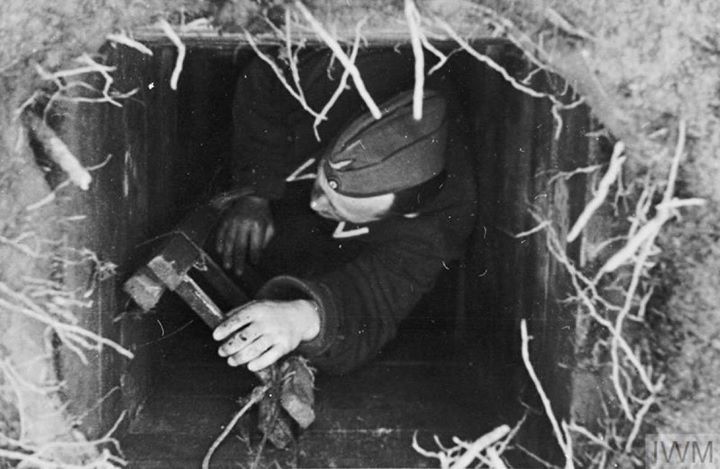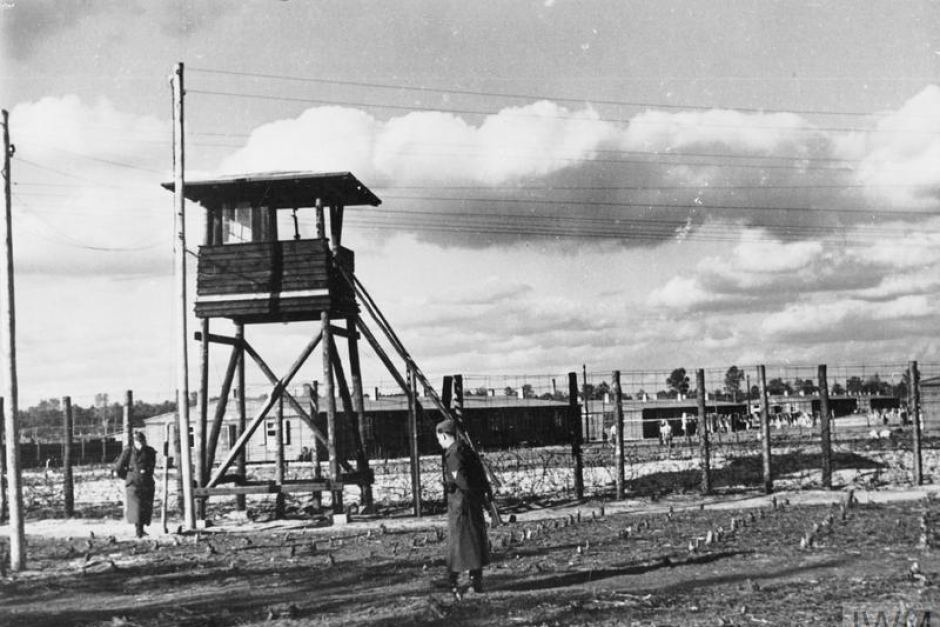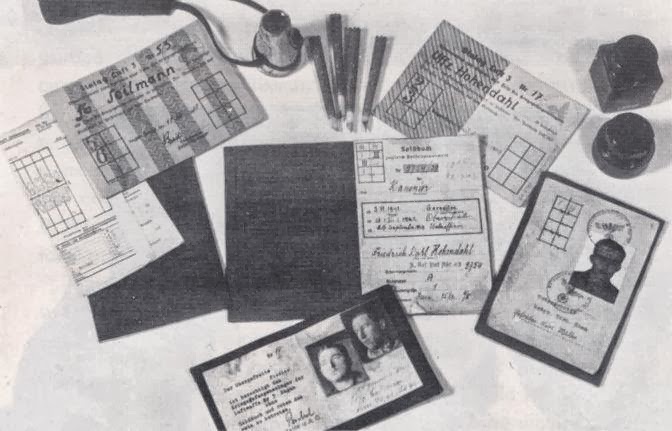On 24th March 1944, 76 RAF and allied airmen made a break for freedom from a prisoner of war camp, in one of the largest escape operations of the Second World War.

More than 600 personnel had been digging tunnels and planning the escape over 15 months at Stalag Luft III, the German-run prisoner of war camp. The operation that was led by RAF officer Squadron Leader Roger Bushell, who was codenamed ‘Big X’.
Innovation
Work began to dig three tunnels: ‘Tom’, ‘Dick’ and ‘Harry’. But how could the tunnels be dug with no equipment?
The airmen stole everyday objects from around the camp, drawing upon their skills learnt before and during their service to turn them into tools for tunnel digging and life on the run after escaping:
- 2,279 knives, forks and spoons were used for digging
- 4,000 bed boards used to strengthen tunnel walls
- 1,400 milk tins were turned into ventilation ducts to pump air into the tunnels
- Military uniforms were disguised as normal civilian clothing
- Maps were hidden inside playing cards
- Identification documents were forged
- Records were melted down and used with razor blades to create 100 compasses
Aside from relying upon skills in engineering, forgery and craftsmanship, the success of the operation came down to the sheer dedication of the RAF and allied airmen.
Escape
On the night of the escape, 200 chosen men were waiting in Hut 104 to crawl through tunnel ‘Harry’ to freedom. (‘Tom’ had been found by the Germans and ‘Dick’ had been abandoned.)

Disaster struck when the first man out discovered that the exit was 10 feet short of the woods, leaving the escapers in full view of a guard tower. A rope tugging system was quickly devised to signal when it was safe to exit - with that, 76 prisoners crawled out of the tunnel in a bid for freedom.
As the 76th man was crawling towards the woods, he was spotted by a German guard on patrol. Immediate chaos ensued and the prisoners waiting in Hut 104 immediately began to dispose of all evidence; throwing maps and forged identification documents into burning stoves and eating escape rations as fast as they could.

Investigation
All but three of the escapers were re-captured in the days after the break out. Hitler ordered for 50 of them to be shot. They were taken to various locations in pairs and small groups to make it appear they had been shot trying to resist capture.
The executions of the 50 initiated the largest British military police investigation in history. Conducted by the RAF Police Special Investigation Branch, 72 Nazis were identified to have participated in the executions. Of these, 38 were tried and sentenced. The fate of the rest varied.
The three escapers that made it to safety were:
- Sergeant Per Bergsland - Norwegian serving with the RAF
- Second Lieutenant Jens Müller - Norwegian serving with the RAF
- Flight Lieutenant Bram van der Stok - Dutch serving with the RAF




